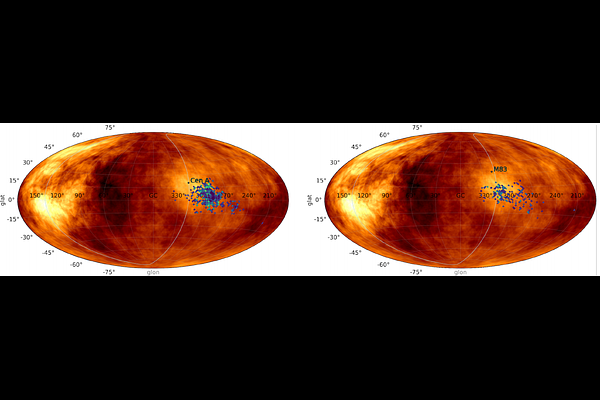Cen A hotspot in Ultra-High-Energy Cosmic Rays illuminated by M83 or Cen A?

Cen A hotspot in Ultra-High-Energy Cosmic Rays illuminated by M83 or Cen A?
K. Dolgikh, A. Korochkin, G. Rubtsov, D. Semikoz, I. Tkachev
AbstractThe standard assumption about the influence of the turbulent intergalactic magnetic field (IGMF) on the images of ultra-high-energy cosmic rays (UHECR) sources is that the latter are formed in a random walk mode in the deflection angle. As a result, the images are symmetrically broadened to angular scales proportional to the IGMF strength and the square root of its correlation length. We demonstrate that when the size of the emitting region is smaller than the correlation length of the IGMF, a new focusing regime emerges. In this regime, significant deviations from the standard random walk approximation occur even when the distance between the source and the observer exceeds several tens of IGMF correlation lengths. The angular size of the resulting images is typically smaller than predicted by random walk, and the IGMF causes a systematic shift of the entire image away from the true source direction. This introduces additional uncertainty in the search for UHECR sources. We show that the excess observed by Pierre Auger Observatory in the direction of Cen A can be explained by the contribution of M83, provided that the image shift occurs as predicted by some models of the Galactic magnetic field (GMF) and that the IGMF plays a minor role due to its low strength and short coherence length. Alternatively, Cen A may indeed be the true source of the excess, as certain realizations of the IGMF can compensate the deflection caused by the GMF.